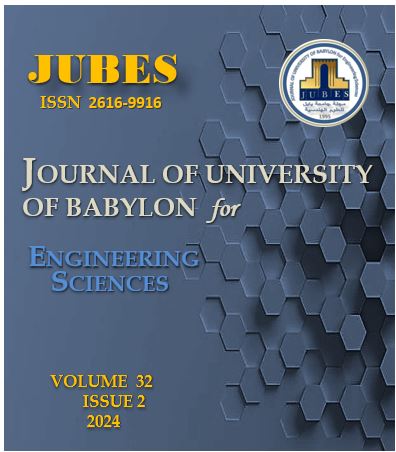Maximum modelling One-dimensional Flow in Shatt Al-Hillah in the Middle of Iraq: Acase Study
Main Article Content
Abstract
hhhhhFloods rank high among recurring natural disasters, causing widespread global economic losses and endangering human lives. Therefore, predicting floods is crucial. Shatt AlHillah is vital for water supplies, including industrial, agricultural, and domestic uses, in three Iraqi provinces: Babylon, Diwaniya, and Muthanna, sourced from the Euphrates River. This study aims to assess the discharge capacity of shatt alhillah under current conditions and predict potential flood causing discharges.
A one-dimensional model, version 6.0.1Hec_ras, was developed to simulate possible flood scenarios. The model was calibrated, revealing a Manning's roughness coefficient of n=0.023. HEC-RAS Validation of simulated flood outcomes was done by Root Mean Square Error (RMSE) Equation Between simulated and observed data, where the coefficient of RMSE for calibrating shatt alhillah was 0.058 in an appropriate range. The maximum current capacity of shatt Al-Hillah is 205m3/s that cannot accommodate the design discharge 303m3/s. However, using several scenarios with discharges greater than 205m3/s, it was found that some sections experience flooding when the discharge increases. Areas prone to flooding increase with higher river discharges, with a discharge of 450m3/s causing flooding in the greatest number of sections.
Downloads
Article Details

This work is licensed under a Creative Commons Attribution 4.0 International License.
